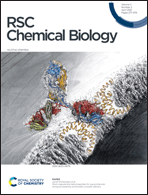
RSC Chemical Biology
Scope & Guideline
Bridging Chemistry and Biology for Tomorrow's Innovations
Introduction
Aims and Scopes
- Chemical Probes and Molecular Tools:
The journal publishes research on the design, synthesis, and application of chemical probes that enable the study of biological processes, including protein-protein interactions, post-translational modifications, and enzyme activities. - Biosynthesis and Natural Products:
A significant focus is on the chemical biology of natural products, including biosynthetic pathways and the engineering of natural products for therapeutic applications. - RNA and Nucleic Acid Chemistry:
Research related to RNA chemistry, including the development of nucleic acid analogs and their applications in therapeutics and diagnostics, is a core area of interest. - Bioconjugation and Drug Development:
The journal covers innovative bioconjugation strategies for drug development, including the use of peptides and small molecules to enhance therapeutic efficacy and targeting. - Chemical Biology of Metals:
The exploration of metal interactions in biological systems, including metalloproteins and metal-based therapeutics, is a unique contribution of the journal. - Synthetic Biology and Genetic Engineering:
RSC Chemical Biology publishes articles that delve into synthetic biology techniques and genetic engineering, particularly those that utilize chemical biology tools to manipulate biological systems.
Trending and Emerging
- Bioorthogonal Chemistry:
There is an increasing emphasis on bioorthogonal reactions that allow for selective labeling and modification of biomolecules in living systems, facilitating advancements in imaging and therapeutic applications. - Precision Medicine and Targeted Therapies:
Research focusing on precision medicine, including the development of targeted therapies utilizing small molecules and peptides, is on the rise, reflecting a broader trend in the biomedical field. - Machine Learning and Computational Approaches:
The integration of machine learning and computational methods in chemical biology research is becoming prevalent, particularly in predicting protein-ligand interactions and optimizing drug design. - Synthetic Biology Innovations:
Emerging methodologies in synthetic biology, including the engineering of biosynthetic pathways and the design of novel biomolecules, are gaining popularity as researchers seek to create new therapeutic agents. - Metabolomics and Proteomics:
There is a growing interest in the application of metabolomics and proteomics technologies to understand complex biological systems and disease mechanisms, emphasizing the need for comprehensive biological profiling.
Declining or Waning
- Traditional Organic Synthesis:
Research solely focused on traditional organic synthesis techniques without direct application to biological questions appears to be waning in favor of more integrated approaches that combine chemical synthesis with biological insights. - Basic Enzyme Mechanism Studies:
While enzyme mechanisms remain relevant, studies that do not explore the broader implications or applications of these mechanisms in biological contexts are less frequently published. - Single Target Drug Discovery:
There is a noticeable decline in studies focusing exclusively on single-target drug discovery approaches; researchers seem to be shifting towards multi-target and systems biology approaches. - Classical Biochemical Assays:
The reliance on classical biochemical assays without innovative adaptations or integration with modern technologies (such as molecular imaging or high-throughput screening) is becoming less common. - In vitro Models with Limited Biological Relevance:
Research utilizing in vitro models that do not adequately mimic in vivo conditions is declining, as there is a growing emphasis on studies that offer greater translational relevance.
Similar Journals
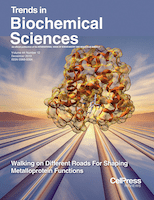
TRENDS IN BIOCHEMICAL SCIENCES
Empowering Breakthroughs in Molecular BiologyTRENDS IN BIOCHEMICAL SCIENCES is a premier academic journal published by CELL PRESS, focusing on the latest advancements and insights in the dynamic fields of biochemistry and molecular biology. With an ISSN of 0968-0004 and an E-ISSN of 1362-4326, this journal has established itself as a leading source of high-impact research, boasting an impressive Q1 category ranking in both Biochemistry and Molecular Biology as of 2023. The journal's Scopus Ranks further highlight its significance, placing it in the top 3% and 4% of its respective fields, emphasizing its role as a vital platform for disseminating innovative research. Published since 1976 and continuing through 2024, TRENDS IN BIOCHEMICAL SCIENCES provides a comprehensive overview of the latest trends, methods, and applications, helping researchers, professionals, and students stay at the forefront of their disciplines. Although it offers traditional access options, the journal's rich content and authoritative analysis make it a must-read for those pursuing cutting-edge biochemical research.

Molecular Systems Design & Engineering
Pioneering Research at the Intersection of Chemistry and EngineeringMolecular Systems Design & Engineering, published by the esteemed Royal Society of Chemistry, stands at the forefront of interdisciplinary research focused on the integration of molecular systems and engineering principles. With its ISSN 2058-9689 and a robust impact within various scientific domains, this journal not only facilitates the advancement of knowledge in fields such as Biomedical Engineering, Chemical Engineering, and Materials Chemistry, but also fosters collaborative innovations that address contemporary challenges in energy and manufacturing processes. Its recent rankings, including Q1 categorization in Critical areas of Chemical Engineering and Materials Chemistry, underscore its significance and influence within the scientific community, making it a vital resource for researchers, professionals, and students alike. Access options are available to meet diverse reader needs, encouraging wider dissemination of groundbreaking findings and methodologies that enhance the design and application of molecular systems.
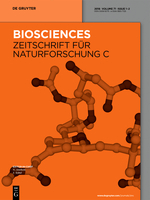
ZEITSCHRIFT FUR NATURFORSCHUNG SECTION C-A JOURNAL OF BIOSCIENCES
Unveiling Innovations in the Life SciencesZEITSCHRIFT FUR NATURFORSCHUNG SECTION C - A JOURNAL OF BIOSCIENCES, published by Walter de Gruyter GmbH, stands as a significant contribution to the field of biochemistry, genetics, and molecular biology. With an ISSN of 0939-5075 and an E-ISSN of 1865-7125, this esteemed journal has been disseminating critical research since its inception in 1973 and will continue to do so through 2024. As a recognized leader in its category, the journal holds a Q3 rank in the comprehensive field of biochemistry, genetics, and molecular biology, placing it in the 57th percentile according to Scopus rankings. While it operates under a traditional subscription model, this publication serves as a vital repository of high-quality, peer-reviewed articles that illuminate new discoveries and ongoing innovations within biosciences. Researchers, professionals, and students alike will find valuable insights and cutting-edge research within its pages, making it an essential resource for anyone serious about advancing their understanding in this dynamic field.
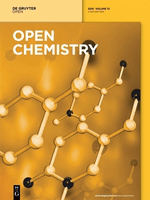
Open Chemistry
Illuminating the Path of Chemical InnovationOpen Chemistry, published by DE GRUYTER POLAND SP Z O O, is a distinguished peer-reviewed journal that has been serving the global chemistry community since its inception. With an ISSN of 2391-5420 and an E-ISSN also of 2391-5420, this open-access journal has been accessible to researchers and practitioners alike since 2015, ensuring a wide dissemination of high-quality research findings. Located in Germany, specifically at BOGUMILA ZUGA 32A STR, 01-811 WARSAW, MAZOVIA, POLAND, Open Chemistry aims to publish innovative research across various chemical disciplines, with special attention to miscellaneous chemistry and materials chemistry. It is currently ranked in the Q3 category for both fields as of 2023, reflecting its solid standing within the academic community, with specific ranks of 187/408 in General Chemistry and 153/317 in Materials Chemistry, corresponding to respective percentiles of 54 and 51. Open Chemistry not only enhances the accessibility of cutting-edge research but also serves as a vital resource for students, professionals, and scholars seeking to advance their knowledge in the rapidly evolving landscape of chemical sciences.
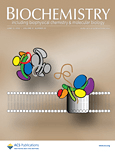
BIOCHEMISTRY
Connecting researchers through high-quality biochemical insights.BIOCHEMISTRY is a premier academic journal published by the American Chemical Society, dedicated to advancing the field of biochemistry through the dissemination of high-quality research. With an ISSN of 0006-2960 and an e-ISSN of 1520-4995, this esteemed publication has been a vital resource since its inception in 1962 and continues to contribute to the scientific community, boasting a remarkable Q1 ranking in the field as of 2023. The journal's well-curated content emphasizes fundamental biochemical research, molecular genetics, and innovations in biochemical techniques, catering to a diverse audience of researchers, professionals, and students. Although not an open-access publication, BIOCHEMISTRY plays a crucial role in facilitating knowledge exchange and fostering academic collaboration globally, making significant contributions to the understanding of the biochemical processes that underpin life.
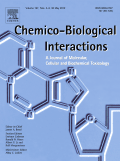
CHEMICO-BIOLOGICAL INTERACTIONS
Exploring the Nexus of Chemistry and BiologyCHEMICO-BIOLOGICAL INTERACTIONS is a premier journal published by Elsevier Ireland Ltd, dedicated to advancing the field of chemical and biological interactions since its inception in 1969. With a robust focus on pharmacology and toxicology, the journal holds a prestigious Q1 ranking in both Medicine (miscellaneous) and Toxicology, reflecting its significance in disseminating influential research. As part of the Scopus database, it ranks #21 out of 133 journals in Toxicology, positioning it in the 84th percentile and ensuring high visibility for cutting-edge studies. This scholarly platform serves as a crucial resource for researchers, professionals, and students who seek reliable and innovative findings at the intersection of chemistry and biology. While currently not open access, CHEMICO-BIOLOGICAL INTERACTIONS provides a comprehensive collection of articles that contribute to the ongoing dialogue in toxin research and its implications on medicinal chemistry, thereby fostering advancements in public health and safety.
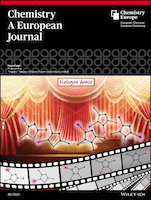
CHEMISTRY-A EUROPEAN JOURNAL
Empowering Discovery in Organic ChemistryCHEMISTRY-A EUROPEAN JOURNAL is a premier academic journal published by WILEY-V C H VERLAG GMBH, specializing in the diverse fields of chemistry and catalysis, with a distinguished focus on organic chemistry. Since its inception in 1995, the journal has established itself as an authoritative resource for researchers and professionals, currently classified in Q1 in Chemistry (miscellaneous) and Organic Chemistry, reflecting its high-quality contributions to the scientific community. With an impressive impact factor and robust Scopus rankings—#33 in Organic Chemistry and #26 in Catalysis—this journal serves as a vital platform for disseminating innovative research findings and critical advancements in chemical sciences. Although not an open-access journal, it provides valuable access options for institutions, ensuring wide reach and engagement within the scientific community. As it converges into 2024, CHEMISTRY-A EUROPEAN JOURNAL remains a key resource for anyone dedicated to advancing the frontiers of chemistry research.
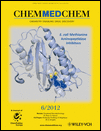
ChemMedChem
Advancing the frontiers of medicinal chemistry.ChemMedChem is a leading international journal published by WILEY-V C H VERLAG GMBH in the United Kingdom, specializing in the interdisciplinary fields of medicinal chemistry and drug discovery. With a commendable impact factor that places it in the Q1 quartile for Organic Chemistry and among the Q2 ranks in several other key categories including Biochemistry, Molecular Medicine, and Pharmacology, ChemMedChem serves as a vital platform for the dissemination of innovative research and transformative insights in the development of pharmaceutical agents. Since its inception in 2006, this journal has been at the forefront of advancing knowledge that bridges the gap between fundamental research and practical applications in medicine, making it an essential resource for researchers, professionals, and students alike. Although it currently does not offer Open Access options, the journal ensures high-quality peer-reviewed content that engages its audience and fosters collaborative scientific discourse.

International Journal of Biology and Chemistry
Advancing Knowledge at the Intersection of Biology and ChemistryInternational Journal of Biology and Chemistry (ISSN: 2218-7979; E-ISSN: 2409-370X) is a distinguished peer-reviewed journal published by AL-FARABI KAZAKH NATIONAL UNIVERSITY, dedicated to advancing the interdisciplinary fields of biology and chemistry. This journal aims to foster a comprehensive understanding of biological systems and chemical processes, thereby promoting collaborative research and innovative methodologies. With a rigorous selection process and commitment to quality, the journal provides a platform for original research articles, reviews, and case studies that contribute to the scientific community's knowledge base. Although specific metrics such as H-Index and Scopus rankings are currently not listed, the journal continues to be an important resource for researchers, professionals, and students alike. By providing open access to high-quality research outputs, the International Journal of Biology and Chemistry is poised to make a significant impact in its field, bridging gaps between biological sciences and chemistry while encouraging groundbreaking discoveries.
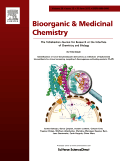
BIOORGANIC & MEDICINAL CHEMISTRY
Unveiling Breakthroughs in Medicinal ChemistryBIOORGANIC & MEDICINAL CHEMISTRY, published by Pergamon-Elsevier Science Ltd, is a prominent journal in the fields of biochemical research and drug discovery, with an ISSN of 0968-0896 and an E-ISSN of 1464-3391. Established in 1993, it has garnered respect and recognition, evidenced by its categorization in various quartile ranks across 2023, including Q2 in Clinical Biochemistry and Pharmaceutical Science. It holds significant Scopus rankings, placing it in the 75th percentile in Pharmaceutical Science and 74th percentile in Organic Chemistry, highlighting its influential contributions to ongoing research and developments. This journal provides a platform for disseminating advancements in bioorganic and medicinal chemistry, focusing on innovative methodologies, therapeutic advancements, and molecular pharmacology. Although it does not follow an open-access model, it remains a key resource for researchers, professionals, and students aiming to stay at the forefront of scientific discovery in the UK and beyond. The journal’s commitment to enhancing knowledge within the biomedical community makes it an essential read for those passionate about this dynamic field.